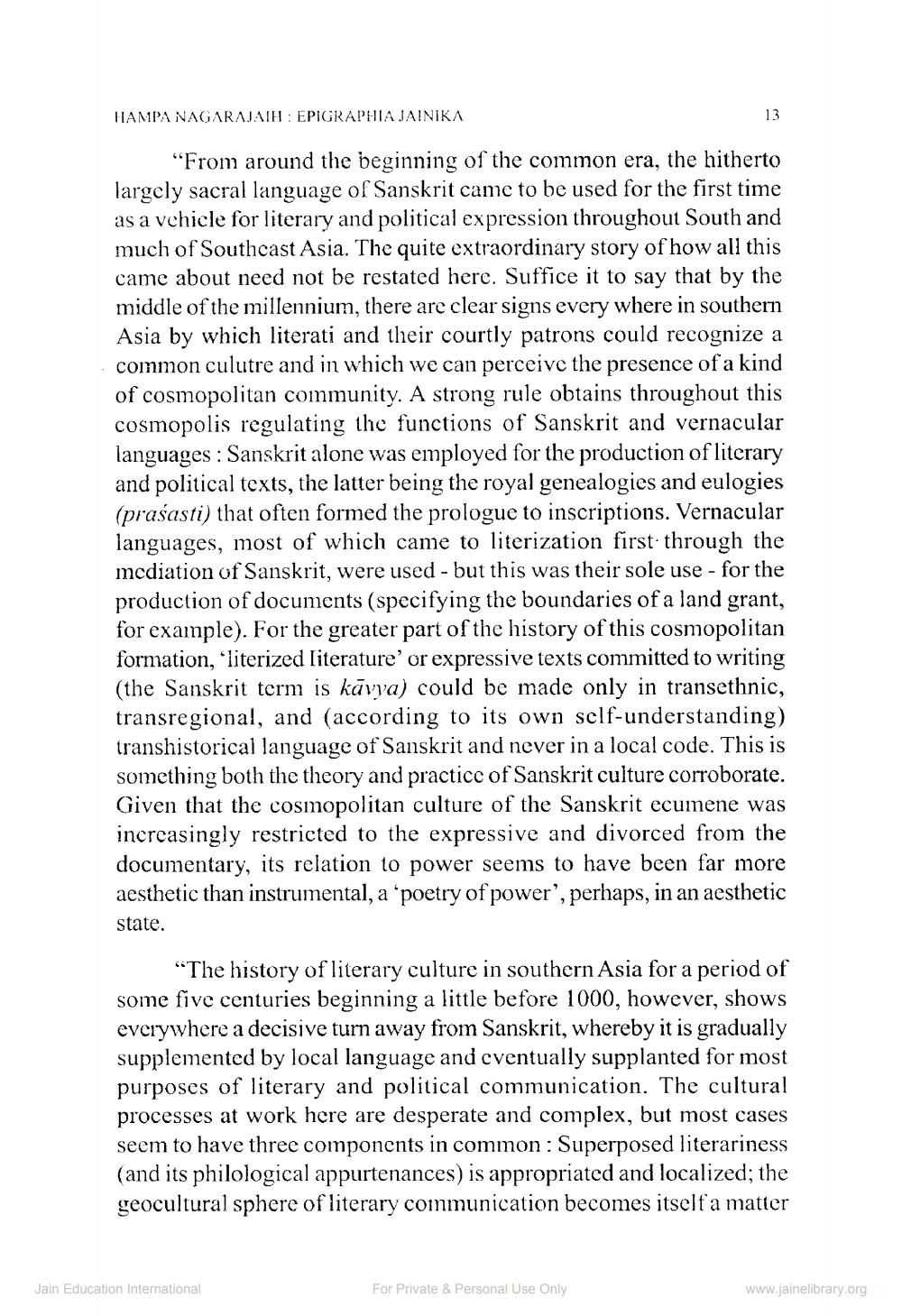________________
HAMPA NAGARAJAIH: EPIGRAPHIA JAINIKA
"From around the beginning of the common era, the hitherto largely sacral language of Sanskrit came to be used for the first time as a vehicle for literary and political expression throughout South and much of Southeast Asia. The quite extraordinary story of how all this came about need not be restated here. Suffice it to say that by the middle of the millennium, there are clear signs every where in southern Asia by which literati and their courtly patrons could recognize a common culutre and in which we can perceive the presence of a kind of cosmopolitan community. A strong rule obtains throughout this cosmopolis regulating the functions of Sanskrit and vernacular languages: Sanskrit alone was employed for the production of literary and political texts, the latter being the royal genealogies and eulogies (prasasti) that often formed the prologue to inscriptions. Vernacular languages, most of which came to literization first through the mediation of Sanskrit, were used - but this was their sole use- for the production of documents (specifying the boundaries of a land grant, for example). For the greater part of the history of this cosmopolitan formation, 'literized literature' or expressive texts committed to writing (the Sanskrit term is kāvya) could be made only in transethnic, transregional, and (according to its own self-understanding) transhistorical language of Sanskrit and never in a local code. This is something both the theory and practice of Sanskrit culture corroborate. Given that the cosmopolitan culture of the Sanskrit ecumene was increasingly restricted to the expressive and divorced from the documentary, its relation to power seems to have been far more aesthetic than instrumental, a 'poetry of power', perhaps, in an aesthetic state.
13
"The history of literary culture in southern Asia for a period of some five centuries beginning a little before 1000, however, shows everywhere a decisive turn away from Sanskrit, whereby it is gradually supplemented by local language and eventually supplanted for most purposes of literary and political communication. The cultural processes at work here are desperate and complex, but most cases seem to have three components in common: Superposed literariness (and its philological appurtenances) is appropriated and localized; the geocultural sphere of literary communication becomes itself a matter
Jain Education International
For Private & Personal Use Only
www.jainelibrary.org




